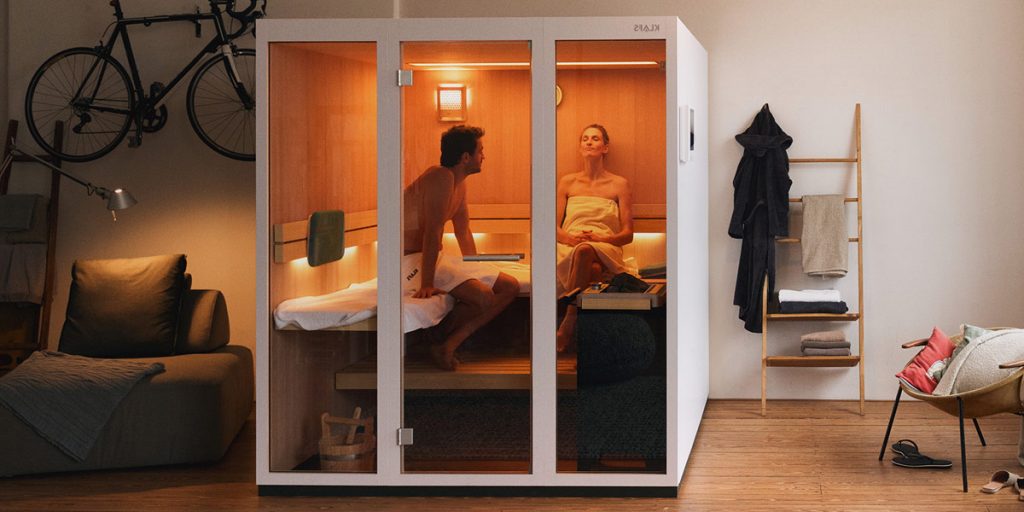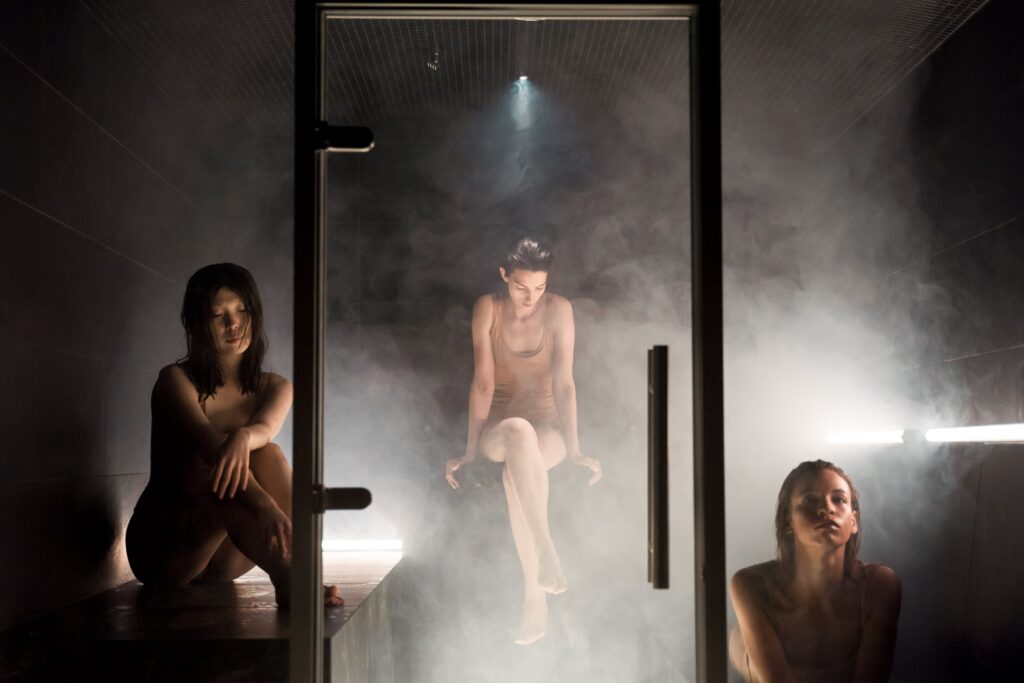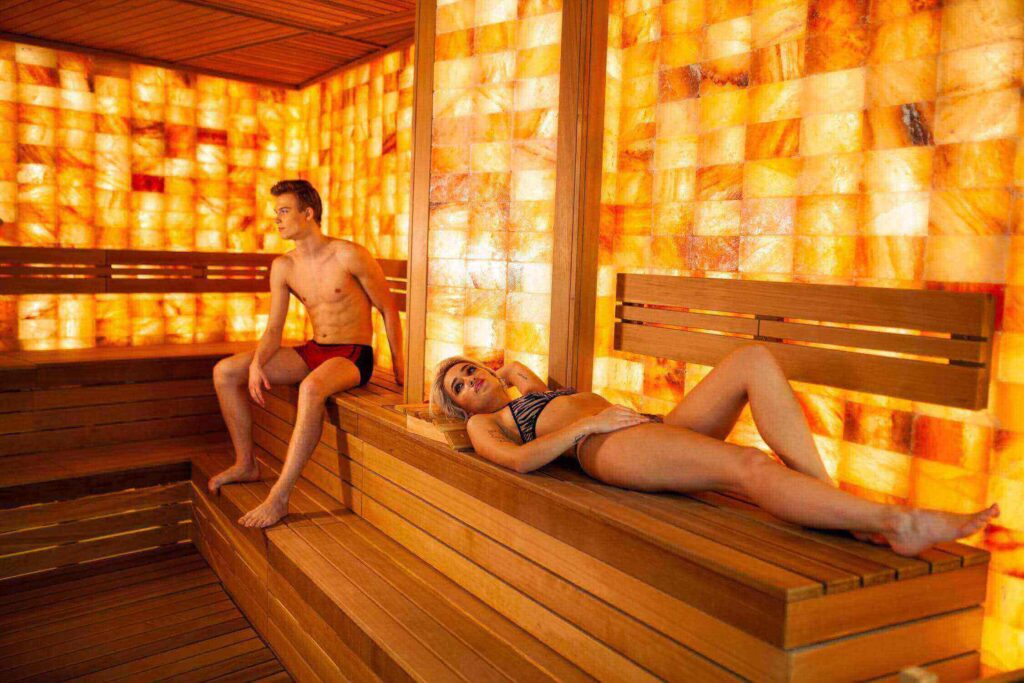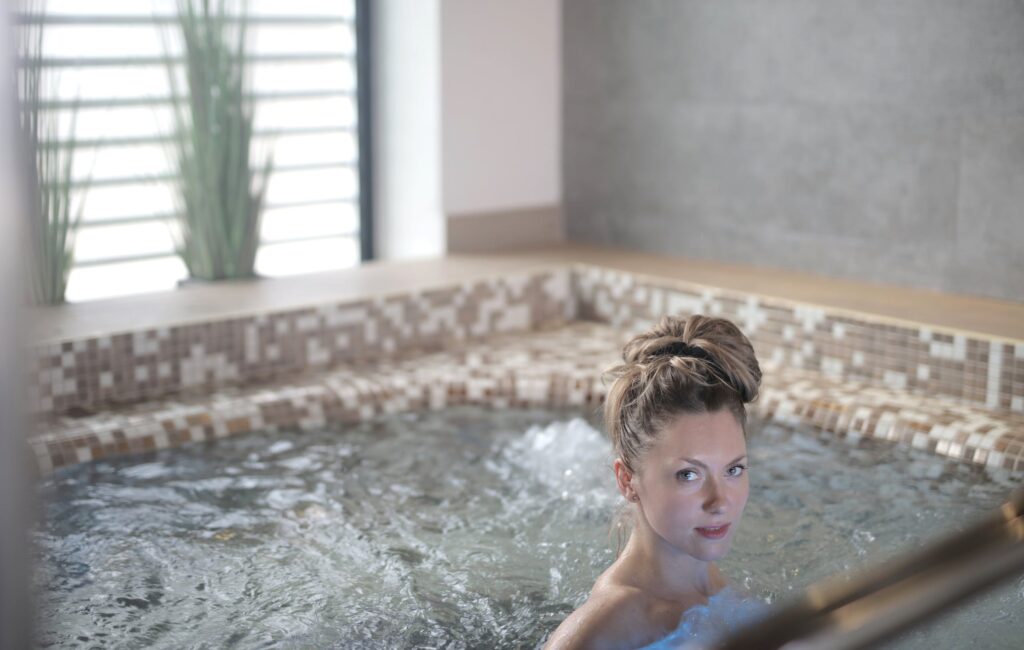For those contemplating the addition of a portable sauna to their home, selecting the optimal location is as crucial as choosing the sauna itself. Many find themselves pondering the best spot to ensure maximum relaxation. The ideal location should be flat and well-ventilated. It's also worth noting that most sauna models necessitate a consistent power source, often from a 220V outlet. Factors such as privacy and accessibility play a significant role in this decision.
Imagine the serenity of unwinding in a sauna after a taxing day, under a starlit sky, accompanied by the subtle sounds of nature. To achieve this dream, the sauna's placement is paramount.
How To Make The Most Of Your Portable Sauna?
In recent years, portable saunas have exploded in popularity as a practical means of reaping the health advantages of a sauna without shelling out for an expensive spa or gym subscription. These small, lightweight devices may be taken virtually anywhere for a soothing sauna experience. A portable sauna can be the key to better health by providing stress reduction, increased circulation, cleansing, or a relaxing vacation.
There Are Various Models Of Portable Saunas.
Infrared Portable Saunas
Infrared heaters provide the radiant heat used in these saunas, warming you up from the inside out. Infrared saunas' capacity to reach deep into the skin boosts pain treatment, detoxification, and relaxation.
Steam Portable Saunas
Moist heat is produced in steam saunas by boiling water. Those who like a more conventional sauna experience may appreciate this model.
Portable Sauna Tents
These saunas may be folded like a tent and are small and portable. They wrap around you, making for a toasty sauna experience. Relax and enjoy your sauna session in the indoor seating area.
Infrared Blankets

These cutting-edge saunas include infrared technology and resemble sleeping bags. They wrap around you, creating a cosy, comforting environment.
Infrared Saunas And Their Advantages
Throughout history, saunas have been embraced globally for their health, hygiene, social, and even spiritual advantages. While traditional saunas are acknowledged for their health benefits, infrared saunas have garnered significant attention for their unique advantages. Here's an exploration of the top benefits of incorporating an infrared sauna into one's routine:
Enhancement of Muscle Recovery
Following endurance exercises, a session in the sauna can significantly reduce the onset of muscle soreness. Although research on the benefits of saunas post strength training or heavy lifting is limited, the advantages after endurance workouts are evident. However, it's essential to weigh the pros and cons, especially considering the fifth point below.
Promotion of Detoxification
The human body employs various mechanisms to expel toxins and metals, with the skin playing a pivotal role. As the body's largest organ, the skin aids in toxin elimination through sweating. Given the increasing prevalence of chemicals in today's environment, sweat has been found to contain heavy metals like lead, arsenic, and mercury, highlighting the skin's role in detoxification.
Stimulation of Growth Hormones
Infrared saunas can stimulate the release of growth hormones. Research has shown that a mere 20-minute session in a sauna heated to 110 degrees Celsius can elevate growth hormone levels up to five times the pre-sauna levels, especially when followed by a 35-minute cool-down period.
Enhancement of Insulin Sensitivity
Insulin sensitivity is crucial, with its deficiency being associated with conditions like obesity, inflammation, and type 2 diabetes. Hyperthermia, achieved through sauna sessions, has shown potential in improving insulin resistance. Thus, regular sauna usage can be beneficial, especially for those grappling with diabetes or insulin resistance disorders, which can contribute to weight issues.
Production of Heat Shock Proteins
Infrared saunas can also aid in muscle development. Studies on animals have shown that inducing hyperthermia through saunas can elevate the expression levels of heat shock proteins, facilitating quicker muscle recovery post-injury. It's noteworthy that any form of exercise induces some level of muscle tissue damage, making this benefit particularly relevant.
Boosting Nitric Oxide Levels
Nitric oxide (NO) plays a crucial role in the body, acting as a vasodilator and enhancing blood flow to muscles. Adequate NO levels are beneficial for both genders, with its bioavailability being particularly significant for male erections. Research has indicated that infrared saunas can boost NO levels, a fact further substantiated by a 3-week study involving ten sauna sessions.
Top Locations For A Private Sauna
A home sauna would be ideal. A home sauna can add value to your property and improve your health and well-being if placed and installed properly. In this essay, we'll discuss where a sauna might be most beneficial in your home.
Locations For A Private Sauna
- Outdoor near pool or garden: Offers a one-of-a-kind, organic atmosphere and a beautiful panorama of the surrounding area.
- Spare room: Your at-home spa is conveniently located and completely private.
- Large garage: Allows you to enjoy your sauna in peace and gives you the convenience of a private entrance.
- Basement: It's a common choice for home saunas because of its ample room and seclusion.
- Attic: This is a novel option for installing a home sauna.
The Top Spot For Your Sauna Is The Outdoors
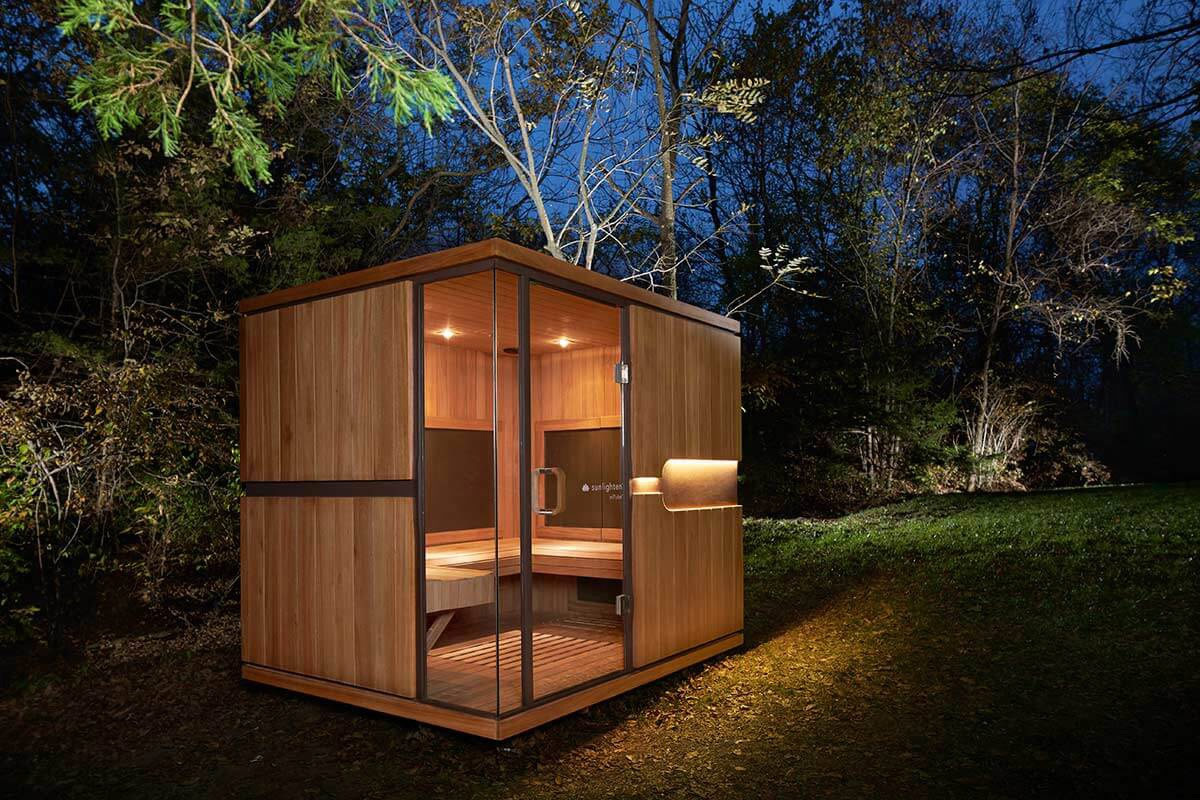
We recommend setting up your home sauna in the great outdoors. Consider constructing your sauna in the great outdoors, next to your pool or garden, for a truly one-of-a-kind experience. This spot offers a magnificent perspective of your scenery and the health benefits of being outside in nature.
Pros:
- Offers something fresh and organic to enjoy.
- Use outdoor space that isn't being used to its full potential.
- Better suited for hosting parties and gatherings.
- Makes a great focal point for a yard.
Cons:
- More intrusive outdoor privacy measures, such as landscaping or fencing, may be necessary.
- Protecting the sauna from the outdoors may necessitate additional weatherproofing and regular maintenance.
- The cost of an outdoor sauna is higher.
Utilising A Spare Room For Your Home Sauna
A second alternative is an extra bedroom in your home. This increases discretion and convenience. You can expand the spa experience by including a shower, among other amenities.
Pros:
- Gives you more seclusion and convenience, and you may set up a full fitness centre in your house.
- Basic amenities like power and space are already in place.
- The average home has an extra bedroom.
Cons:
- Converting a room into a sauna could restrict its future use.
Things To Think About In The Environment
Few things can compare to the rejuvenating effects of a sauna session on the body and mind. But have you ever considered the ecological costs of this time-honoured pastime? The environmental impact of using a sauna might range from the cost of running it to the durability of the materials it's made from.
Impact On Your Energy Bills
As everyone knows, saunas are notorious power hogs. Energy costs might increase using a traditional sauna, especially if you heat it with electricity or gas. Maintaining the high temperatures necessary for a sauna session can be costly and harmful to the environment. There are, however, techniques to lessen this effect:
Choose Space Heaters That Save Energy
Upgrade to more efficient sauna heaters to cut costs and carbon emissions. For instance, infrared saunas only heat the person using them rather than the entire room. Therefore, they need far less power.
Proper Insulation
It's important to have good insulation in your sauna to keep the heat in. This minimises the cost and energy needed to maintain a steady temperature in the room.
Smart Thermostat Controls
Get a programmable thermostat to keep the temperature exactly where you want it and not overheat your home. This avoids using any extra power than necessary.
Environmental Considerations And Sustainability
It's important to think about the wider environmental ramifications of your sauna beyond just the immediate impact on your energy expenses. This includes the environmental friendliness of building supplies:
Wood Sourcing

When constructing or repairing a sauna, using wood from responsible sources is important. Look for certification labels such as FSC (Forest Stewardship Council) to ensure ethical logging practices.
Chemical-Free Options
Choose sauna materials and finishes that don't contain any dangerous chemicals or VOCs. This lowers your sauna's carbon footprint and improves air quality inside.
Recycling And Disposal
When getting rid of used sauna equipment, please do so responsibly. Try to reuse or recycle them wherever you can.
What to Look for in an Eco-Friendly Sauna?
Consider eco-friendly saunas if you're serious about environmental protection and want to do more.
- Infrared saunas are more eco-friendly since they generate less waste heat and warm you up from the inside out.
- Solar-powered saunas: Use solar energy to heat your sauna if you live somewhere with plenty of sunshine. Using solar panels, you may get renewable and eco-friendly energy.
- Outdoor saunas: It may be more eco-friendly to construct a new, well-ventilated outdoor sauna rather than renovate an old indoor one. There is less need for complex climate management in outdoor saunas because of the natural dissipation of heat and moisture.
Reaping the health benefits of sauna use need not include sacrificing the planet. A sauna session can benefit your health and the environment if you are conscious of your energy usage, select eco-friendly materials, and investigate green sauna choices. So, enjoy your sauna session with the knowledge that you are helping to create a more environmentally friendly and sustainable world.
FAQs About Sauna
It's advisable to consult a professional, especially if you're unsure about the electrical and ventilation requirements. They can offer expert guidance to ensure your sauna is safely and optimally placed.
Safety is paramount. Avoid placing the sauna near combustible materials, ensure it's on a stable surface, and follow all manufacturer's safety guidelines. Additionally, have a fire extinguisher nearby for added safety.
While it's possible, it's not recommended to place a portable sauna in your bedroom or living room due to potential heat and moisture damage to furniture and electronics. Choose a more suitable location with better ventilation.
Yes, be mindful of the sauna's size and clearance requirements. Ensure there's enough space around it for safe access and ventilation. Refer to the manufacturer's guidelines for specific measurements.
If you want to move your portable sauna, ensure you follow proper disassembly and reinstallation procedures outlined in the user manual. Avoid moving it while it's in operation to prevent damage or accidents.
Conclusion
Choose the best location for your portable sauna to maximise relaxation and rejuvenation. Choose a flat, well-ventilated spot with a constant power connection, preferably from a 220V outlet. Consider your need for seclusion and ease of access when deciding where to place your sauna. Portable saunas have gained popularity as a practical means of reaping the health advantages of a sauna without spending an expensive spa or gym subscription. There are various models of portable saunas, including infrared, steam, portable sauna tents, and infrared blankets.
Infrared saunas have numerous benefits, including muscle recovery, detoxification, growth hormone stimulation, insulin sensitivity improvement, heat shock protein production, and boosting nitric oxide levels. Infrared saunas can reduce muscle soreness after endurance exercises, promote detoxification, and help with muscle development. Additionally, infrared saunas can boost nitric oxide levels, which are crucial for both genders and can improve blood flow to muscles. By considering these factors when deciding where to place your portable sauna, you can create a relaxing and rejuvenating experience that will benefit your overall health and well-being.
A home sauna can enhance your health and well-being by adding value to your property and improving your overall well-being. Top locations for a private sauna include outdoor areas near a pool or garden, spare rooms, large garages, basements, and attics. Outdoor saunas offer a unique, organic atmosphere and a beautiful panorama of the surrounding area but may require more intrusive outdoor privacy measures and regular maintenance.
Utilising spare rooms in your home can provide more seclusion and convenience but may restrict future use. Additionally, converting a room into a sauna could restrict its future use.
The environmental impact of sauna use can range from energy bills to the materials' durability. To reduce these costs, consider using space heaters that save energy, proper insulation, and smart thermostat controls. Consider the wider environmental ramifications of sauna use, such as using wood from responsible sources, choosing chemical-free materials, and recycling and disposing of used sauna equipment responsibly.
Eco-friendly saunas include infrared saunas, solar-powered saunas, and outdoor saunas. Infrared saunas generate less waste heat and warm you from the inside out, while solar-powered saunas use solar energy for renewable and eco-friendly energy. Outdoor saunas are more eco-friendly due to the natural dissipation of heat and moisture.
Enjoying a sauna session doesn't have to sacrifice the planet. By being conscious of energy usage, selecting eco-friendly materials, and researching green sauna choices, you can enjoy your sauna session while contributing to a more environmentally friendly and sustainable world.
Content Summary
- Selecting the right location for a portable sauna enhances relaxation.
- The location of your sauna is as crucial as the sauna itself.
- A flat, well-ventilated spot is ideal for sauna placement.
- Most sauna models need a 220V power connection.
- Consider both privacy and accessibility when choosing a location.
- The perfect sauna spot can turn your relaxation dreams into reality.
- Sarah Holmes, a renowned sauna designer, offers insights on sauna placement.
- Portable saunas offer health benefits without the need for spa memberships.
- Infrared portable saunas use radiant heat, warming from the inside out.
- Steam portable saunas produce moist heat by boiling water.
- Portable sauna tents are foldable and provide a snug experience.
- Infrared blankets, resembling sleeping bags, offer a cosy environment.
- Saunas have been globally recognised for their myriad benefits.
- Infrared saunas offer unique advantages over traditional ones.
- Saunas can aid muscle recovery post-endurance exercises.
- The skin, being the largest organ, plays a role in detoxification.
- Sweating can help eliminate heavy metals like lead and arsenic.
- Infrared saunas stimulate the release of growth hormones.
- Saunas can enhance insulin sensitivity, which is beneficial for diabetes patients.
- Infrared saunas aid muscle development by producing heat shock proteins.
- Nitric oxide levels can be boosted through sauna sessions.
- A home sauna can add value to your property.
- Outdoor saunas offer a unique experience with scenic views.
- Spare rooms can be converted into private, convenient saunas.
- Large garages offer privacy and a separate entrance for sauna sessions.
- Basements are popular choices for saunas due to space and seclusion.
- Installing a sauna in the attic is an innovative idea.
- Outdoor saunas provide a natural setting and health benefits.
- Outdoor saunas can be a focal point for gardens.
- Saunas in spare rooms offer discretion and convenience.
- Converting a room into a sauna may limit its future use.
- Saunas have an environmental impact, from energy use to material sourcing.
- Traditional saunas can increase energy costs.
- Infrared saunas are energy-efficient as they heat the user, not the room.
- Proper insulation in saunas retains heat and reduces energy consumption.
- Programmable thermostats can regulate sauna temperatures efficiently.
- Consider the environmental impact of sauna construction materials.
- Using responsibly sourced wood is crucial for sauna construction.
- Opt for sauna materials free from harmful chemicals.
- Dispose of old sauna equipment responsibly, prioritising recycling.
- Eco-friendly saunas are available for environmentally conscious users.
- Infrared saunas are eco-friendly due to reduced waste heat.
- Solar-powered saunas utilise renewable energy for heating.
- Outdoor saunas can be more eco-friendly than renovated indoor ones.
- Sauna sessions can be both health-beneficial and eco-friendly.
- Being energy-conscious can make sauna use environmentally friendly.
- Green sauna choices can help reduce environmental impact.
- Sauna sessions can contribute to a sustainable world.
- Sauna use doesn't have to compromise environmental well-being.
- Making informed choices ensures both relaxation and eco-friendliness in sauna use.

